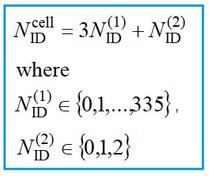5G NR Frame Structure Explained
Advertisement
Introduction
The 5G NR (New Radio) frame structure, defined by the 3GPP standard, is designed to provide flexibility and scalability for diverse applications, ranging from enhanced mobile broadband (eMBB) to ultra-reliable low-latency communication (URLLC) and massive machine-type communication (mMTC). The frame structure consists of 10 ms radio frames, each divided into 1 ms subframes, which are further segmented into slots. The slot duration varies depending on the selected subcarrier spacing (SCS), enabling adaptable transmission configurations for different deployment scenarios.
Additionally, each slot comprises multiple OFDM symbols, where the number of symbols per slot depends on the numerology (µ) and the chosen SCS.
5G Frame Structure
5G NR supports two frequency ranges:
- FR1 (Sub 6GHz)
- FR2 (millimeter wave range, 24.25 to 52.6 GHz)
NR uses flexible subcarrier spacing derived from the basic 15 KHz subcarrier spacing used in LTE.


A frame has a duration of 10 ms and consists of 10 subframes, each having a 1ms duration, similar to LTE technology. Each subframe can have 2μ slots. Each slot typically consists of 14 OFDM symbols. The radio frames of 10 ms are transmitted continuously, one after the other, as per the TDD topology.
The subframe is of fixed duration (i.e., 1ms), whereas the slot length varies based on the subcarrier spacing and the number of slots per subframe. As shown below, it is 1 ms for 15 KHz, 500 µs for 30 KHz, and so on. A subcarrier spacing of 15 KHz occupies 1 slot per subframe, while a subcarrier spacing of 30 KHz occupies 2 slots per subframe, and so on.
Each slot occupies either 14 OFDM symbols or 12 OFDM symbols based on normal CP and extended CP, respectively.

Each 5G NR frame is divided into two equal-sized half frames with 5 subframes in each. Half frame-0 consists of subframes 0 to 4, and half frame-1 consists of subframes 5 to 9.
The uplink frame-i starts TTA time duration before the start of downlink frame-i.
Where:
- Physical layer timing unit,
- KHz,
- ns

is defined in TS 38.133 document as per table 7.1.2-2.
- OFDM symbols in a slot can be classified as ‘downlink’, ‘flexible’, or ‘uplink’.
- Signaling of slot formats is mentioned in subclause 11.1 of TS 38.213 document.
The table below mentions the same.
- In a slot in a downlink frame, the UE shall assume that downlink transmissions only occur in ‘downlink’ or ‘flexible’ symbols.
- In a slot in an uplink frame, the UE shall only transmit in ‘uplink’ or ‘flexible’ symbols.
- A UE not capable of full-duplex communication is not expected to transmit in the uplink earlier than after the end of the last received downlink symbol in the same cell where is given by TS 38.101 document.
Slot Formats in 5G NR Frame Structure (Normal CP)
Description: The table illustrates various slot formats possible within a 5G NR frame structure when using normal Cyclic Prefix (CP). The slots can be entirely downlink, entirely uplink, or a mix of both, with certain symbols being designated as ‘flexible’ to allow for dynamic allocation.
As mentioned in the description above, a slot can be all downlink, all uplink, or mixed (i.e., a combination of downlink and uplink). Here, mixed refers to static, semi-static, or dynamic configurations.
Slot aggregation is supported in 5G NR; hence, data transmission can be scheduled to span one or multiple slots. Slot format indication informs the UE whether an OFDM symbol is downlink, uplink, or flexible.
The figure below depicts the same.

The number of resource blocks per subframe is depicted in the following figure.

The figure depicts the resource grid of 5G NR with symbols on the time axis and subcarriers on the frequency axis. Twelve subcarriers form one PRB (Physical Resource Block). 5G NR supports 24 to 275 PRBs in a single slot. Occupied BW of 34.56 MHz (minimum) and 396 MHz (maximum) can be achieved for 120 KHz subcarrier spacing. One SS/PBCH Block occupies 4 OFDM Symbols in the time domain and 24 PRBs in the frequency domain. 5G NR SS consists of PSS and SSS as specified for LTE.
Conclusion
This flexible design allows 5G NR to support a wide range of frequency bands and deployment scenarios, optimizing latency, spectral efficiency, and throughput. By enabling dynamic TDD/FDD operations and multiple transmission time interval (TTI) configurations, the 5G NR frame structure ensures efficient resource allocation, making it a cornerstone for the high-performance capabilities of next-generation wireless networks.
Advertisement
 RF
RF


